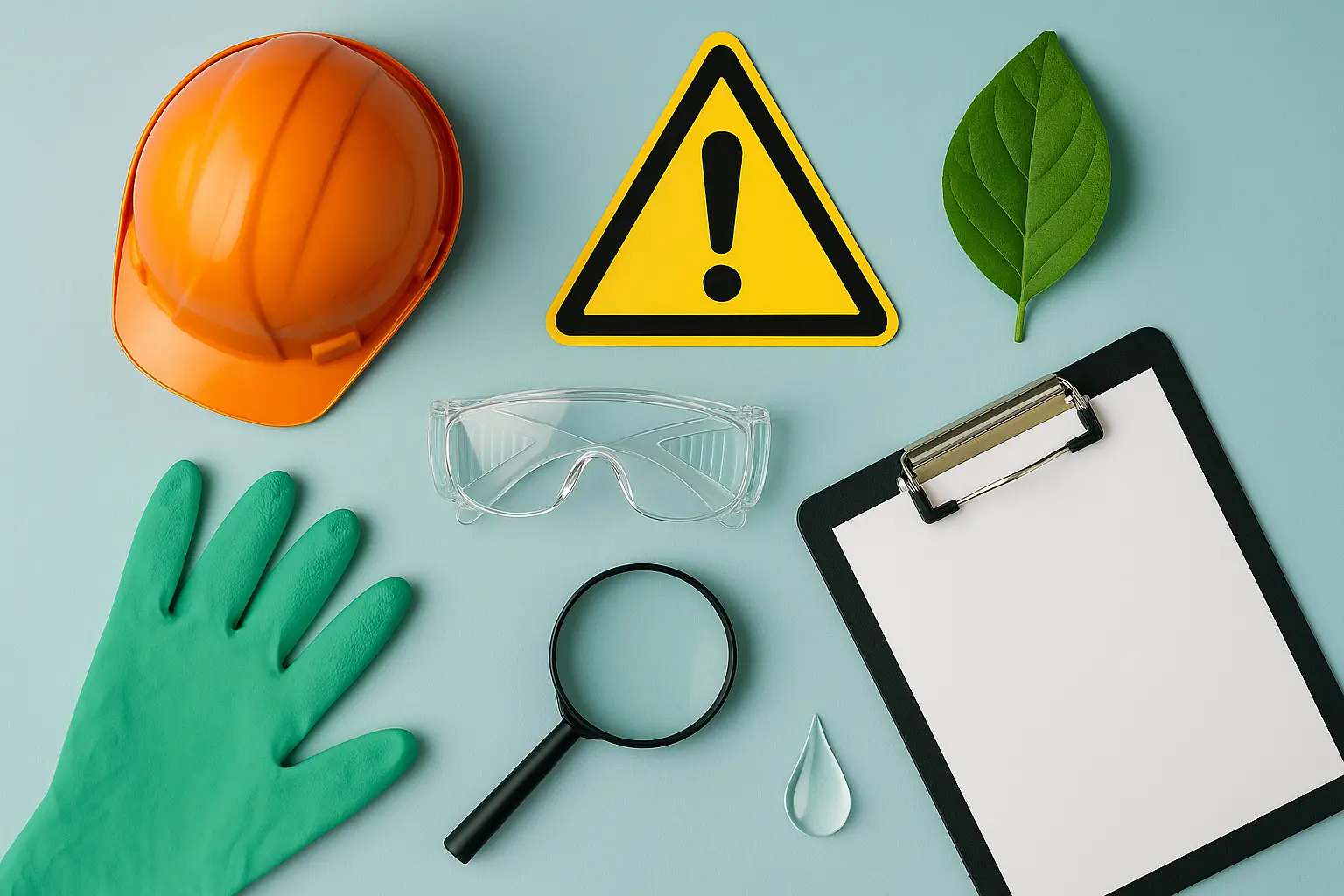EN 482 Occupational Exposure Requirements Certification
The EN 482 standard addresses occupational exposure to certain chemicals and other hazardous substances. This certification ensures that organizations meet stringent requirements designed to protect workers from harmful exposures in the workplace.
Occupational exposure refers to the inhalation, ingestion, or contact with a substance at concentrations above the specified threshold limits (TLVs). These standards are crucial for industries dealing with potentially dangerous materials such as solvents, pesticides, and other chemicals. Compliance with EN 482 is mandated by various jurisdictions worldwide and is essential for maintaining a safe working environment.
The standard applies to a wide range of sectors including manufacturing, construction, agriculture, and chemical processing. It requires the implementation of control measures aimed at reducing exposure as far as reasonably practicable (as per OSHA PELs). Compliance involves regular monitoring of air quality in workspaces, proper ventilation systems, and personal protective equipment (PPE).
EN 482 certification is a critical step for organizations aiming to demonstrate their commitment to occupational health and safety. It provides assurance that the workplace environment is safe from harmful exposures, thereby protecting workers' long-term health.
The standard covers various parameters including but not limited to:
- Airborne concentrations of hazardous substances
- Personal protective equipment effectiveness
- Workplace ventilation and air quality
- Employee training on exposure risks
To achieve certification, organizations must undergo rigorous testing and evaluation. This includes the collection of samples for analysis in a laboratory setting, using validated methods to determine compliance with set limits.
The process involves:
- Identifying all potential occupational exposures within the workplace
- Implementing control measures such as engineering controls, administrative controls, or PPE
- Monitoring and evaluating exposure levels through regular sampling and analysis
- Documenting findings and implementing corrective actions where necessary
The certification is valid for a specified period, typically one year. During this time, ongoing monitoring and adjustments to the control measures are required to ensure continuous compliance.
For organizations operating in multiple locations or expanding their operations into new areas, maintaining EN 482 certification can be challenging but crucial. Regular audits and updates to policies and procedures are necessary to adapt to changing workplace conditions and emerging risks.
Industry Applications
The application of EN 482 Occupational Exposure Requirements Certification is broad and varied across different industries. Here, we explore some key sectors:
Manufacturing: In manufacturing plants, the use of chemicals and solvents can lead to significant occupational exposure risks. Compliance with EN 482 ensures that these risks are managed effectively through proper control measures.
Construction: The construction industry often involves the handling of hazardous materials such as paints, adhesives, and cleaning agents. Certification helps mitigate the dangers associated with these substances for workers on-site.
Agriculture: Farmers and agricultural workers frequently come into contact with pesticides and herbicides. EN 482 certification ensures that these individuals are protected from harmful exposures during their work activities.
Chemical Processing: Facilities involved in the production, storage, or handling of hazardous chemicals must adhere to strict standards for worker safety. Certification under EN 482 is essential for maintaining compliance and ensuring a safe working environment.
In all these sectors, the primary goal of EN 482 certification is to protect workers from harmful exposures, thereby enhancing occupational health and safety.
Environmental and Sustainability Contributions
- Emission Reduction: By ensuring that exposure levels are kept within safe limits, the standard helps reduce emissions into the environment. This is particularly important for industries dealing with volatile organic compounds (VOCs) and other hazardous substances.
- Sustainable Practices: Compliance with EN 482 encourages sustainable practices by promoting the use of safer alternatives to harmful chemicals and the implementation of effective waste management systems.
- Eco-friendly Workplaces: The standard contributes to creating eco-friendly workplaces where workers are not exposed to harmful substances, thereby fostering a healthier environment for all employees and the community at large.
The certification also promotes sustainable development by encouraging industries to adopt best practices in occupational health and safety. This helps in reducing the overall environmental impact of industrial activities while ensuring worker welfare.
By adhering to EN 482, organizations can contribute significantly to environmental stewardship and promote a safer and healthier workplace culture.
Competitive Advantage and Market Impact
Meeting the stringent requirements of EN 482 Occupational Exposure Requirements Certification offers several competitive advantages for companies:
Enhanced Reputation: Compliance with this standard enhances an organization's reputation, making it a trusted partner in the industry. This can lead to increased customer trust and loyalty.
Cost Savings: By preventing occupational illnesses and injuries, organizations can reduce healthcare costs and worker compensation claims. Additionally, maintaining certification helps avoid potential fines and penalties associated with non-compliance.
Innovation and Development: The standard encourages the development of safer technologies and processes, which can lead to innovations that set companies apart from competitors.
Market Access: Many global markets have stringent occupational safety regulations. Certification under EN 482 can open up new market opportunities for organizations wishing to expand internationally.
In summary, compliance with EN 482 not only ensures worker safety but also provides a competitive edge in the marketplace. It is an essential step for companies aiming to maintain high standards of occupational health and safety.





